General News
Both Sides of The Brain
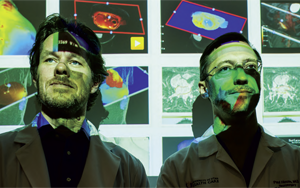 HOW UNIVERSITY OF UTAH HEALTH CARE REMAINS AMONG THE NATION'S BEST IN DEEP BRAIN STIMULATION (DBS)
HOW UNIVERSITY OF UTAH HEALTH CARE REMAINS AMONG THE NATION'S BEST IN DEEP BRAIN STIMULATION (DBS)From University of Utah Clinical Neurosciences Center Convergence (See page 12)
By Jennifer Dobner
It sounds like something straight from a scene in a science fiction film: Surgery that places a set of wires under the skull so that electrical signals can be transmitted to different areas of the brain. It's called DBS, or deep brain stimulation. And if the idea of it seems a bit wince-inducing or scary, then understanding the power of what it can do - quiet the tremors associated with Parkinson's disease and other brain disorders - will likely wash away any patient's fears.
NVIDIA Center of Excellence Renewed
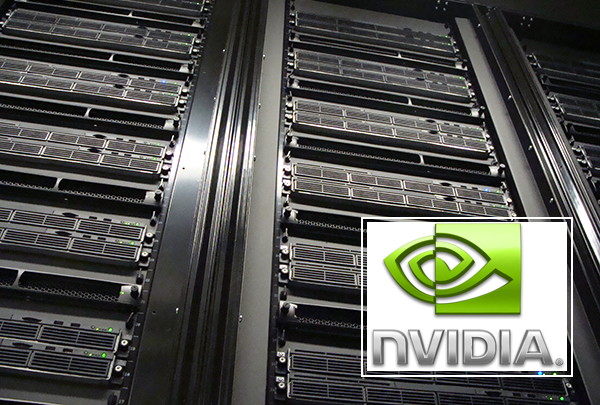 The NVIDIA Corporation, the worldwide leader in visual computing technologies has renewed the University of Utah's recognition as a CUDA Center of Excellence, a milestone that marks the continuing of a significant partnership, starting in 2008, between the two organizations.
The NVIDIA Corporation, the worldwide leader in visual computing technologies has renewed the University of Utah's recognition as a CUDA Center of Excellence, a milestone that marks the continuing of a significant partnership, starting in 2008, between the two organizations.NVIDIA® CUDA™ technology is an award-winning C-compiler and software development kit (SDK) for developing computing applications on GPUs. Its inclusion in the University of Utah's curriculum is a clear indicator of the ground-swell that parallel computing using a many-core architecture is having on the high-performance computing industry. One of twenty-two centers, the University of Utah was the second school to be recognized as a CUDA Center of Excellence along with the University of Illinois at Urbana-Champaign. Over 50 other schools and universities now include CUDA technology as part of their Computer Science curriculum or in their research.
U of U team finishes study of massive, mysterious explosion
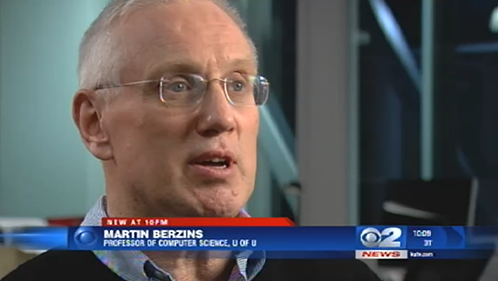 (KUTV) A team of researchers from the University of Utah is wrapping up an exhaustive five-year study looking into a mysterious explosion of a semi-truck in Spanish Fork Canyon back in 2005.
(KUTV) A team of researchers from the University of Utah is wrapping up an exhaustive five-year study looking into a mysterious explosion of a semi-truck in Spanish Fork Canyon back in 2005.The truck was packed with 35,000 pounds of mining explosives. It blew up after the truck rolled over, leaving a massive crater, 70-feet wide and 30-feet deep.
There were no fatalities but explosions like the one that happened on Aug. 10, 2005 are extremely rare. But the team of researchers is determined to prevent this type of incident from happening again.
Martin Berzins appointed Member of ASCAC
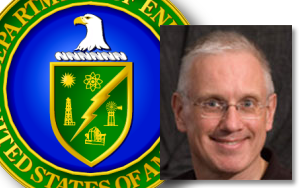 Martin Berzins has been appointed a member of the Advanced Scientific Computing Advisory Committee (ASCAC). The committee provides advice and recommendations on scientific, technical, and programmatic issues relating to the ASCAC Program.
Martin Berzins has been appointed a member of the Advanced Scientific Computing Advisory Committee (ASCAC). The committee provides advice and recommendations on scientific, technical, and programmatic issues relating to the ASCAC Program.The Advanced Scientific Computing Advisory Committee (ASCAC), established on August 12, 1999, provides valuable, independent advice to the Department of Energy on a variety of complex scientific and technical issues related to its Advanced Scientific Computing Research program.
Learn more about ASCAC
Simulations Aimed at Safer Transport of Explosives
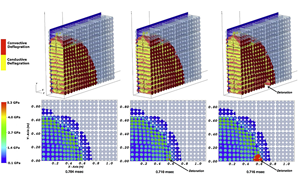 Credit: Jim Collins - Argonne Leadership Computing Facility
Credit: Jim Collins - Argonne Leadership Computing FacilitySee original article: "Simulations Aimed at Safer Transport of Explosives"
In 2005, a semi-truck hauling 35,000 pounds of explosives through the Spanish Fork Canyon in Utah crashed and caught fire, causing a dramatic explosion that left a 30-by-70-foot crater in the highway.
Fortunately, there were no fatalities. With about three minutes between the crash and the explosion, the driver and other motorists had time to flee. Some injuries did occur, however, as the explosion sent debris flying in all directions and produced a shock wave that blew out nearby car windows.
UDCC Open House
 Wednesday, September 17th 2014
Wednesday, September 17th 201410 am to 3 pm
University of Utah
Warnock Engineering Building, Catmull Gallary
72 So. Central Campus Dr.
The first UDCC open house will bring together our consortium partners and engineering students to a single venue. Partners interested in sponsoring student internships through the new Data Center Engineering Certificate will be present for questions, and students will have the opportunity to hear from and engage with some of our nation's leading experts in the field. You can visit our website or email us for more information.
Big Data, Big Business
 From the University of Utah: Feb. 7, 2014 – The University of Utah's College of Engineering received approval this week for its new graduate certificate program in big data.
From the University of Utah: Feb. 7, 2014 – The University of Utah's College of Engineering received approval this week for its new graduate certificate program in big data.This emerging field – which addresses large sets of data too complex, diverse or rapidly changing for one computer to handle – affects everything from studying traffic patterns to managing sensitive information online. Big data is also big business – for example, using big data to improve efficiency and quality in the health care sector is estimated to be worth more than $300 billion each year.
"We're seeing a revolution in the availability of data. It's easy to collect information, but processing and analyzing large stores of data is becoming increasingly difficult. We are at the point where the traditional analytical tools for attacking this problem are breaking down," says Jeff Phillips, assistant professor of computer science and coordinator of the new program.
Computer Simulation of Blood Vessel Growth: Early Step toward Treatment for Diseases that Affect Blood Flow
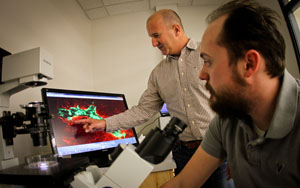 Jan. 22, 2014 – University of Utah bioengineers showed that tiny blood vessels grow better in the laboratory if the tissue surrounding them is less dense. Then the researchers created a computer simulation to predict such growth accurately – an early step toward treatments to provide blood supply to tissues damaged by diabetes and heart attacks and to skin grafts and implanted ligaments and tendons.
Jan. 22, 2014 – University of Utah bioengineers showed that tiny blood vessels grow better in the laboratory if the tissue surrounding them is less dense. Then the researchers created a computer simulation to predict such growth accurately – an early step toward treatments to provide blood supply to tissues damaged by diabetes and heart attacks and to skin grafts and implanted ligaments and tendons.
Academic Senate approves new certificates
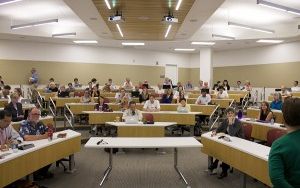 Press Release from The Utah Daily Chronicle
Press Release from The Utah Daily ChronicleBy Nathan Turner on October 7, 2013.
Contact Nathan Turner at This email address is being protected from spambots. You need JavaScript enabled to view it..
The October session of the Academic Senate approved a proposed cross-disciplinary certificate to the College of Engineering and Scientific Computing and Imaging Institute on Monday evening.
Fresh Tracks
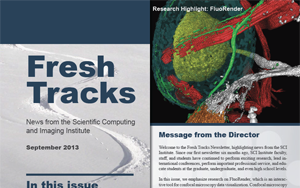 Welcome to the Fresh Tracks Newsletter, highlighting news from the SCI Institute. Since our first newsletter six months ago, SCI Institute faculty, staff, and students have continued to perform exciting research, lead international conferences, perform important professional service, and educate students at the graduate, undergraduate, and even high school levels.
Welcome to the Fresh Tracks Newsletter, highlighting news from the SCI Institute. Since our first newsletter six months ago, SCI Institute faculty, staff, and students have continued to perform exciting research, lead international conferences, perform important professional service, and educate students at the graduate, undergraduate, and even high school levels.
UDCC Open House
 Wednesday, September 11th
Wednesday, September 11th11 am to 2 pm
University of Utah
Warnock Engineering Building, Catmull Gallary
72 So. Central Campus Dr.
The first UDCC open house will bring together our consortium partners and engineering students to a single venue. Partners interested in sponsoring student internships through the new Data Center Engineering Certificate will be present for questions, and students will have the opportunity to hear from and engage with some of our nation's leading experts in the field. You can visit our website or email us for more information.




